Craving bold, comforting flavors with a touch of old-world charm? Portuguese cuisine delivers all that and more, blending rustic ingredients with rich culinary traditions. From steamy bowls of Caldo Verde to flaky custard tarts that have taken the world by storm, Portugal’s food scene is as soulful as it is satisfying. Whether you’re in the mood for seafood-packed stews, golden-fried pastries, or creamy desserts kissed with cinnamon, this list has you covered. These 7 hearty meals and 4 unforgettable sweets will transport your tastebuds straight to the cobbled streets of Lisbon—no passport required. Just bring your appetite and dig in.
1. Caldo Verde
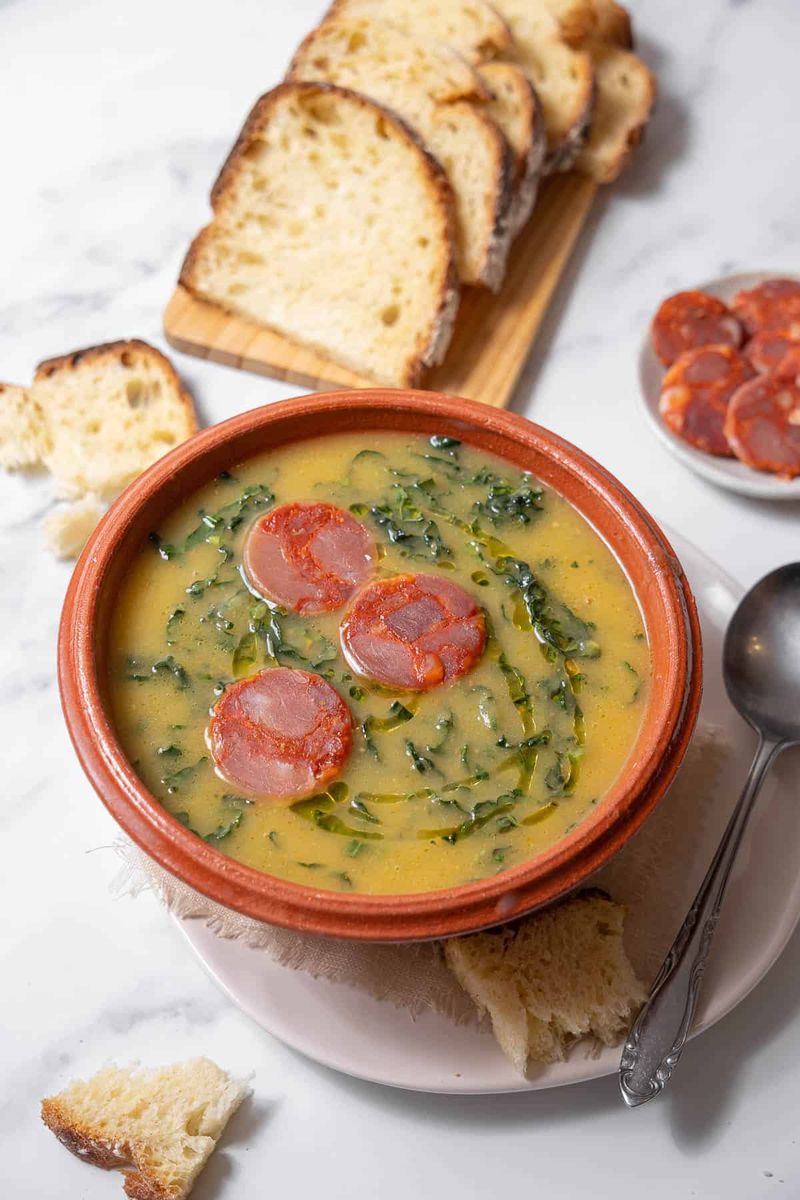
Emerald ribbons of kale float in a velvety potato base, creating Portugal’s most iconic soup. The magic happens when smoky chouriço sausage joins the party, adding rich depth that transforms simple ingredients into comfort food perfection. Traditionally served as a starter, locals enjoy this peasant dish year-round, though it hits differently on chilly evenings. A drizzle of olive oil crowns each steaming bowl. Crusty bread stands ready for dipping – an essential companion that no Portuguese would leave behind. This humble soup tells the story of resourceful cooking that turns everyday ingredients into something extraordinary.
2. Bacalhau à Brás
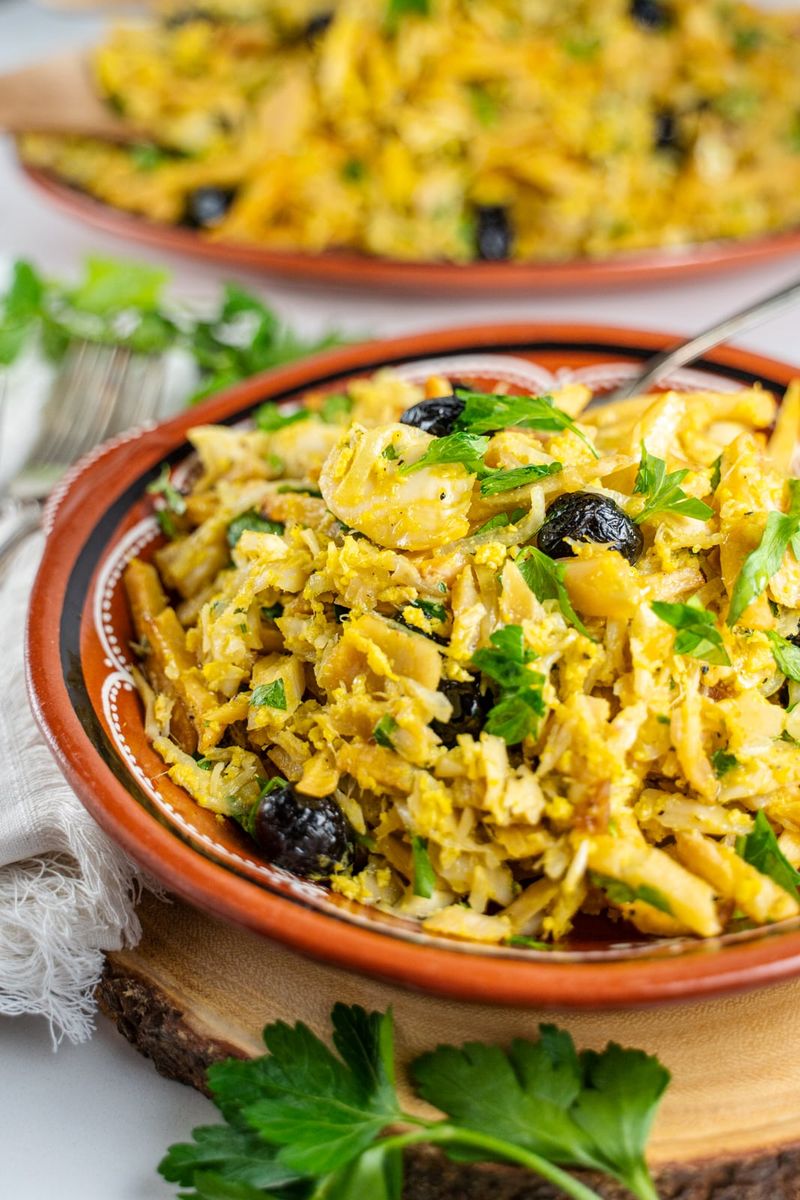
Golden strands of potato intermingle with flakes of salt cod in this quintessential Portuguese creation. Named after its inventor, a Lisbon tavern owner called Brás, this dish represents the Portuguese obsession with bacalhau – they boast 365 different ways to prepare it, one for each day of the year! Silky scrambled eggs bind everything together while onions add sweetness.
Black olives and fresh parsley provide bursts of color and flavor contrast. Despite its humble appearance, the harmony of textures makes this dish irresistible. Every Portuguese family treasures their own version, tweaked through generations but always recognizable as the national favorite.
3. Amêijoas à Bulhão Pato
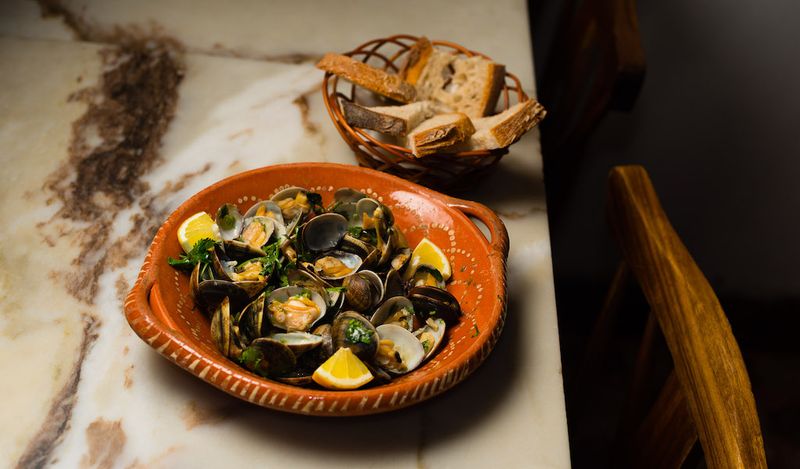
Named after a 19th-century Portuguese poet who adored good food, these garlicky clams capture the essence of coastal Portugal. Fresh clams open in a fragrant bath of white wine, revealing their sweet meat against the punchy sauce. Cilantro adds brightness while garlic provides backbone. The real treasure lies in the golden liquid left behind – a flavor-packed ocean elixir that demands to be sopped up with crusty bread. Locals eat this as a starter or light meal, often with cold beer on sunny afternoons near the water. The simplicity celebrates Portugal’s reverence for seafood, letting quality ingredients speak without unnecessary complications.
4. Rissóis de Camarão

Crescent-shaped treasures reveal a creamy shrimp filling when you bite through their golden crust. The contrast between the crispy exterior and velvety interior makes these Portuguese pastries irresistible party favorites. The filling combines tender shrimp with a béchamel-like sauce infused with hints of lemon and herbs. A double-coating of breadcrumbs ensures maximum crunch when fried.
Found in every snack bar and family gathering, these treats represent Portuguese petiscos culture – small bites meant for sharing. Whether enjoyed hot from street vendors or homemade with recipes guarded through generations, rissóis showcase Portugal’s knack for transforming seafood into portable delights.
5. Arroz de Pato
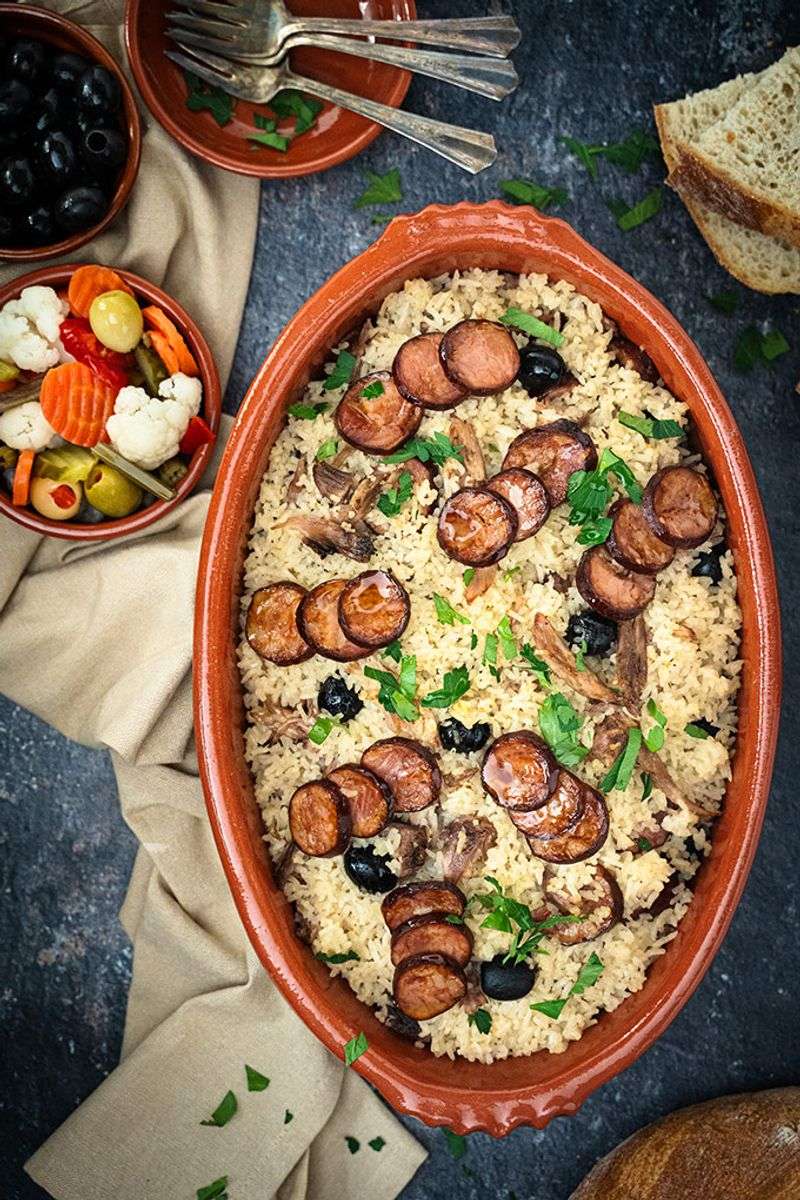
Orange-tinged rice baked to perfection holds tender shreds of duck in this celebration dish. The secret lies in cooking the rice with the rich broth created from slowly simmering the duck, infusing every grain with meaty essence. Slices of smoky chouriço crown the top, creating a crispy, colorful finish under the broiler.
Orange zest and a splash of port wine often add subtle sweetness and depth. Traditionally served at Sunday family gatherings, this hearty casserole represents Portuguese ingenuity in transforming one ingredient into multiple dimensions of flavor. Regional variations exist throughout the country, but all share the same comforting character that makes this dish a national treasure.
6. Bifana

Juicy pork cutlets nestle in crusty bread rolls, creating Portugal’s most beloved street food. Marinated in a secret blend of white wine, garlic, and spices, the meat becomes tender and packed with flavor before a quick sear. Yellow mustard or fiery piri-piri sauce adds the finishing touch. The magic happens when the juices soak into the bread, creating a messy but magnificent eating experience. Football fans grab these before matches while workers rely on them for quick lunches. Even celebrity chef Anthony Bourdain fell under the bifana spell during his Portugal visits. Simple yet perfect, this sandwich proves that Portuguese cuisine excels by elevating ordinary ingredients through careful preparation.
7. Cataplana de Marisco
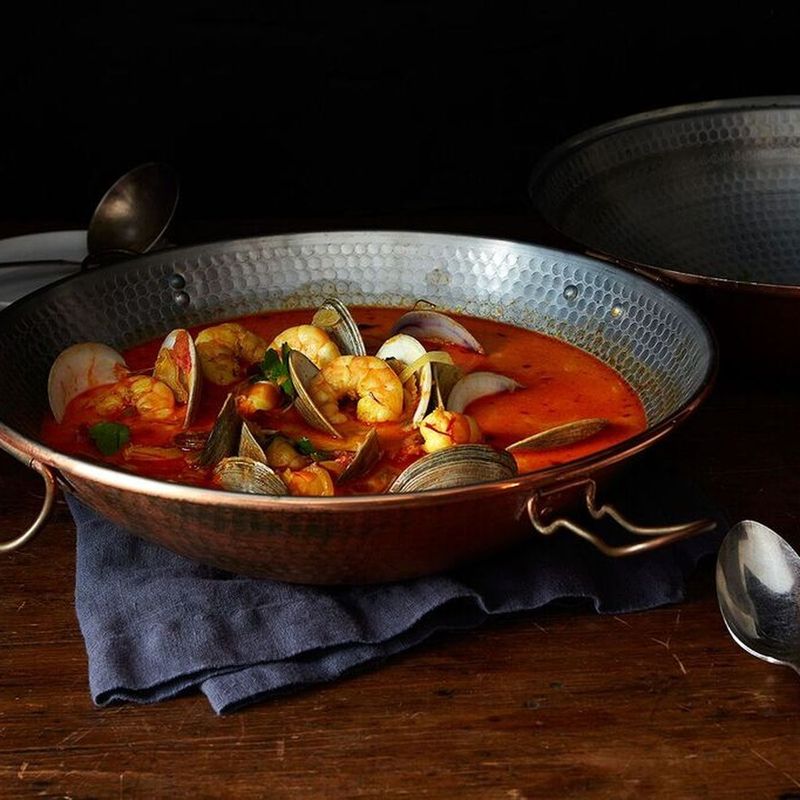
Named after the distinctive clam-shaped copper vessel it’s cooked in, this seafood masterpiece captures Portugal’s maritime soul. The cataplana seals in steam, creating an intense flavor exchange between shellfish, aromatics, and sauce. Clams, shrimp, and sometimes lobster mingle with bell peppers in a fragrant tomato broth kissed by white wine.
Fresh herbs and a touch of smoky paprika complete the flavor profile. From the Algarve region, this dish represents communal dining at its finest – the copper pot ceremoniously opened at the table, releasing an aromatic cloud that tells stories of ocean and sunshine. Each region adds its signature touch, but all versions celebrate Portugal’s deep connection to the sea.
8. Pastéis de Nata

Crisp, paper-thin pastry cradles a wobbling custard center in Portugal’s most famous sweet export. The magic happens in the baking – high heat creates the signature caramelized top with tiny burned spots that add complexity. Created by monks in Lisbon’s Belém district centuries ago, these treats were originally made to use up egg yolks left over from starching religious garments with whites.
The secret recipe remains closely guarded at the original bakery. A dusting of cinnamon and powdered sugar completes the experience. Locals eat them warm with espresso for breakfast or afternoon snacks. One is never enough – Portuguese bakeries sell these treasures by the half-dozen for good reason!
9. Arroz Doce
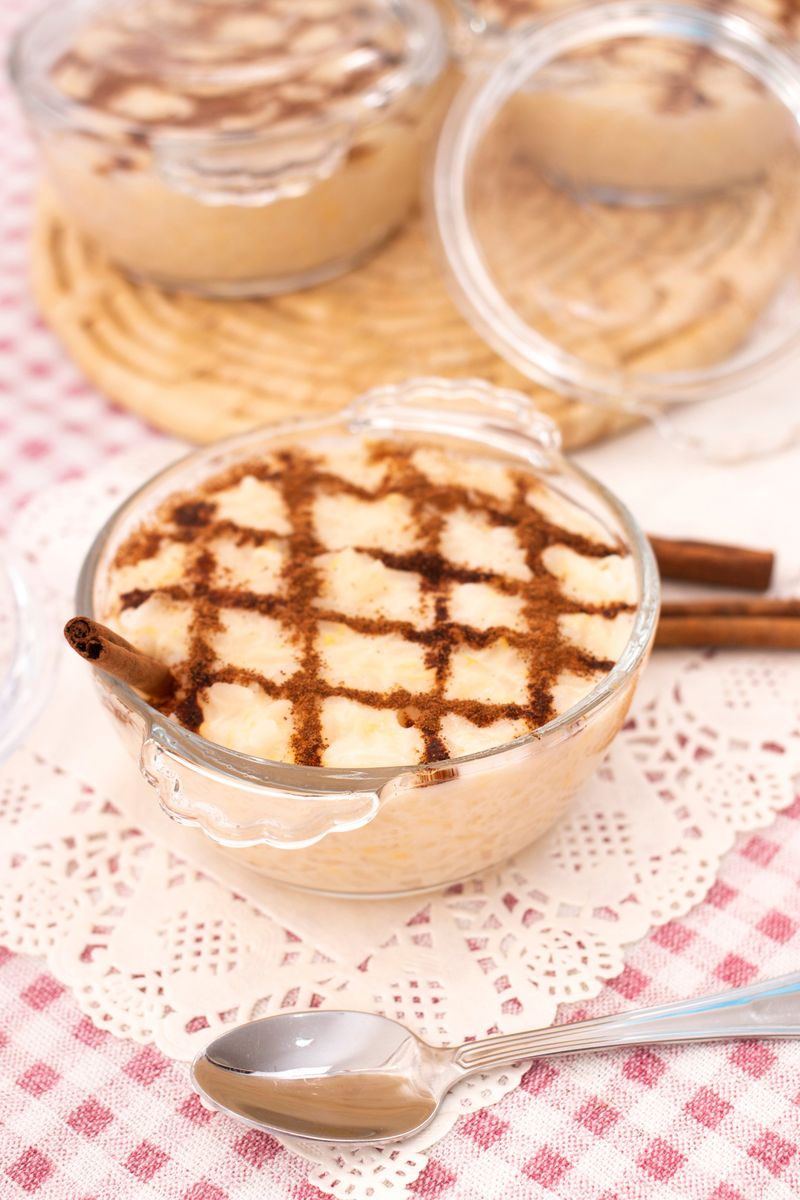
Creamy rice pudding perfumed with lemon reveals Portugal’s knack for transforming simple ingredients into soul-satisfying desserts. Unlike other versions, Portuguese arroz doce maintains distinct rice grains suspended in silky custard rather than becoming completely soft. The signature decoration makes this dessert instantly recognizable – cinnamon powder carefully arranged in intricate geometric patterns across the chilled surface.
Each family passes down their own design traditions. Traditionally served at celebrations, this dessert connects generations through taste memory. The balanced sweetness and bright citrus notes make it refreshing despite its creamy richness. Portuguese grandmothers judge each other’s skill by the consistency and pattern precision of this beloved classic.
10. Queijadas de Sintra

From the mystical town of Sintra come these diminutive cheesecakes with centuries of royal history. The contrast between crisp, paper-thin pastry shells and the soft, fragrant cheese filling creates textural magic in each bite-sized treat. Orange blossom water often perfumes the filling, while cinnamon adds warmth. The tops crack beautifully during baking, revealing the custard beneath in a rustic presentation that belies their sophisticated flavor. Originally made with sheep’s milk cheese by farmers’ wives, these sweets became favorites of Portuguese nobility who summered in Sintra’s palaces. Today, bakeries throughout the charming mountain town compete for the title of best queijadas, using closely guarded family recipes that have changed little over generations.
11. Pudim Abade de Priscos
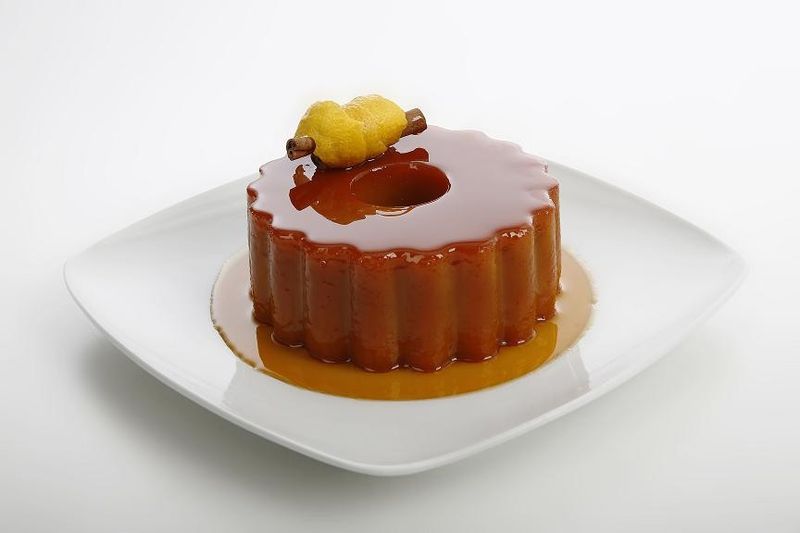
Created by a 19th-century priest with a passion for gastronomy, this silky caramel pudding hides a surprising secret – bacon! Don’t worry, you won’t taste pork; the small amount adds an indescribable depth that elevates this dessert to legendary status. Port wine provides complex notes while fifteen egg yolks create unmatched richness.
The glistening caramel coating flows like liquid amber when sliced, creating a presentation as beautiful as it is delicious. From the northern Minho region, this pudding appears at special occasions and holiday tables. Its creator, Abbot of Priscos, served it to royalty and nobility, earning fame throughout Portugal. Modern chefs still follow his centuries-old recipe, respecting tradition while marveling at his culinary intuition.
Leave a comment